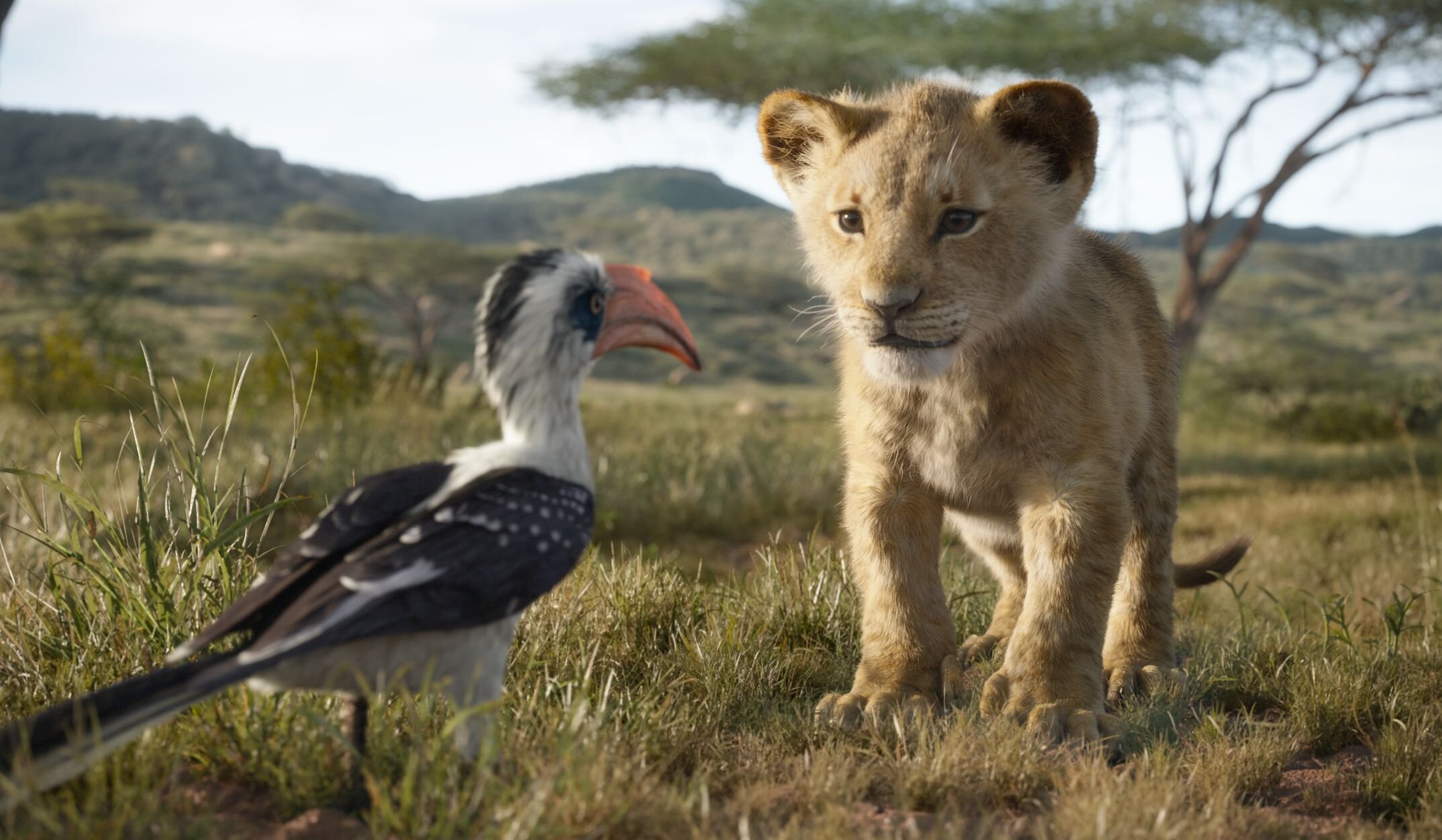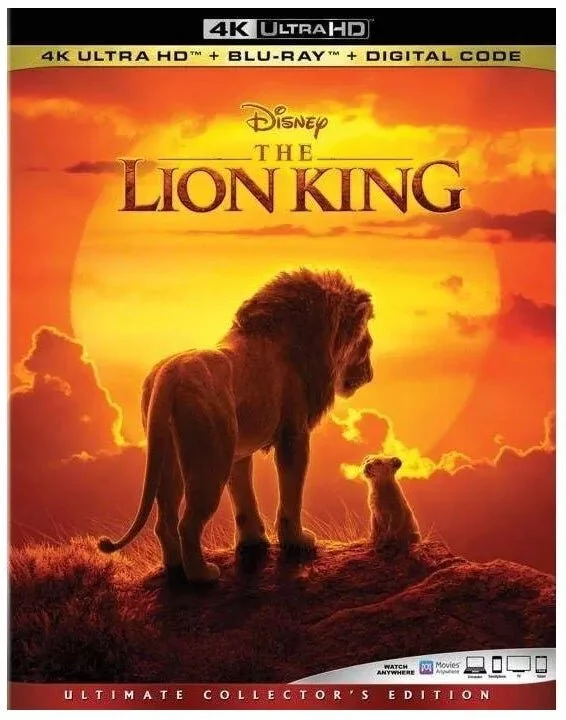REWIND REVIEW: The Lion King
For an occasional new segment, Every Movie Has a Lesson will cover upcoming home media releases combining an “overdue” or “rewind” film review, complete with life lessons, and an unboxed look at special features.
THE LION KING
Anyone who seeks to own this version of The Lion King is doing so with a “how did they do that?” curiosity. The technical brilliance is its biggest selling point. That interest is answered very well by this disc release. Unlike its Pixar and Marvel offerings, Disney compiled a legitimate look into this re-imaginings wholly revolutionary bells and whistles. This movie will look gorgeous on your high-end television at home.
ANTICIPATORY SET AND PRIOR KNOWLEDGE:
Jon Favreau’s The Lion King stands as the biggest test to all of that progress and the attached criticism because of how little beyond the pristinely pixelated exterior is actually “reimagined.” So incredibly and, dare I say, unnecessarily much is nearly a shot-for-shot duplication of Disney’s most popular and most successful film of their Renaissance era. Duplicated enjoyment may have been the goal, but that makes one question a tangible purpose for truly needing any such update. Luckily, the shininess, so to speak, is an undeniably impressive and redeeming feature to a lack of implemented originality.
With around thirty minutes of extra marination here and there simplified by screenwriter and former steady Brett Ratner and Steven Spielberg collaborator Jeff Nathanson, the well-worn tale of The Lion King, with all of its hefty Shakespearean elements, is retold for a new generation. The habitat-sustaining balance of predator and prey on Pride Rock and the coming-of-age journey of an impatient young lion cub named Simba are derailed by the tragic death of his kingly father Mufasa (James Earl Jones). The pourer of snake oil and the engineer of this tragic royal coup is Mufasa’s rebuffed and cerebral younger brother Scar (Chiwetel Ejiofor) and his enlisted army of hyenas. Shamed to believing his idolized father’s death was his fault, Simba leaves the savanna and grows into an adult (Donald Glover) in a lush jungle far away under the practical tutelage and scrappy friendship of a meerkat named Timon (Billy Eichner) and a warthog named Pumbaa (Seth Rogen). When his former betrothed lioness (Beyonce Knowles-Carter) and a spiritual soothsaying baboon (John Kani) from his past discover Simba is alive, they urge him to return home and claim his birthright.
LESSON #1: KIDS, LET’S LEARN ABOUT FOOD CHAINS AND FOOD WEBS — Depending on your chosen educator in the movie, Timon or Mufasa, you either have a straight line (food chain) or a grander circle (food web) to describe linked survival. It’s like the duel between facts and “fake news” only sung as an anthem to help you remember. Everything that lives will die and become the ingredients to a future living thing. We all are the products of that matter ourselves. It’s just what order you observe or place you occupy in the chain or the web.
LESSON #2: CARRY NO TROUBLE OR PROBLEMS IN YOUR LIFE — Just as in 1994, the catchy “Hakuna Matata” comprises your specially packaged teachable nugget for the target demographic. The Swahili phrase meaning “no trouble” or “no problems” remains good advice for moving on from past mistakes and perceived failures with an attitude change to focus on the present and future.
MY TAKE:
The opening line of my review for Aladdin read “It is becoming increasingly tedious to both critique and enjoy these Disney “re-imaginings.” That hasn’t changed. Go back before that with Dumbo and I said “Audiences constantly question the values of duplicated enjoyment or tangible purpose for needing anything new and shiny made from something that worked just that way it was intended decades ago.” That hasn’t changed either. Now, when I go back two years to Beauty and the Beast and read my words of “Let them be different, whether that’s better or worse, because they are different. View them separately and independently. Judge them separately and independently,” I see where the situations have changed for me and for this line of movies. I can’t do that anymore.
It is the present entertainment landscape and the future dividends that have powered this 2019 presentation to an immense level of anticipation. There is no disputing this movie’s immediate and constant wow factor as a stunning visual and technical spectacle. The photo-real animation of The Moving Picture Company supervised by three-time Oscar winner Robert Logato, fellow Jungle Book Oscar winner Adam Valdez, and promoted top supervisor Elliot Newman add divine ethereal layers and qualities to every corner of Caleb Deschanel’s laboratory cinematography, right down to the wind, bugs, hair, and dust. The conjured natural beauty and animal physicality is easily some of the best-looking CGI work Disney has ever attempted of film.
The trade-off with the hyper-detailed realism is the loss of engaging and exaggerated personification of characters and performances from traditional hand-drawn animation. This happened for The Jungle Book as well. Nearly all of the expressive eyes, mouths, and other emotional facial features are flattened and reduced by limits of physiological accuracy. Cartoons, more often than not, will always do that better. It shows here and it is showmanship that is dearly missed.
Stellar voice work would supersede that weakness. However, this update lacks a standout showy performance, even with a “let’s do this” and “I got this” modern attitude sprinkled throughout the diverse casting. Now 88, the returning Jones has lost little timbre, but counts as another ingredient of replication rather than an opportunity for newness. Ejiofor is a less oily Scar than Jeremy Irons and his calculated line deliveries of sinister intent and ruthless edge are underplayed and too calm to a degree. Glover and Knowles feel like they are reading more than emoting and hitting high drama. The most zeal, naturally, comes from the characters with the most personality. The chicanery of Eichner and Rogen charms to embezzle each episode of their participation.
What gave 1994’s The Lion King its lasting importance is the trait of majesty. In my eyes, that always came from the music as much as, if not more than, the characters themselves. The songs composed by the famed Elton John with lyrics by Disney hitmaker Tim Rice brought magnetic appeal. Hans Zimmer’s percussive and choral musical score, which stands as his only Oscar-winning work to date, elevated the entire movie’s powerful presence for show-stopping impact. That memorable music, recomposed and reworked by all three men with the infusion and addition of Beyonce, is the smartest and, in the end, the most essential anchoring element of this carryover. That vital strength is successfully retained rather than lost. Now, the musical majesty has a matching and radiant visual one primed to stir both new and old amazement.
LESSON #3: BE A GIVING KING — The generosity of a ruler’s wisdom and actions gain more fealty among their subjects than any fear or oppressive control. Mufasa and Simba earned that loyalty. The other animals in their organic orb of influence genuflect in respect. Can the same effect be evoked from the watching audiences of Jon Favreau’s new achievement as they gain or lose trust in Disney’s reputation with these second comings? The regal resonance of this parable wins. No matter if the version of The Lion King being shown is sketched or coded, we too may bow to the grand splendor on display.
3 STARS
EXTRA CREDIT:
The centerpiece of this home media edition is 53-minute “The Journey to The Lion King.” The presentation is divided into three chapters with director Jon Favreau’s ever-present finger in every pie. This feature easily bests the miniature 5-15 minute attempts of its peers. Even the so-so fans for this remake will find creativity to be impressed by in the production process for this movie.
The first segment is a 13-minute portion documenting the return of composer extraordinaire Hans Zimmer to the project that earned his only Oscar so far in his illustrious career. With a second crack at The Lion King, Zimmer brought increases of drums and vocal force to the familiar. Hearing Zimmer speak on his creative process and goals is fascinating. To have him and Elton John return to curate the score and songs was a coup for the studio and filmmakers.
The middle segment is the best and is subtitled “The Magic.” Here is where we see the extensive shooting process, led by six-time Oscar-nominated cinematographer Caleb Deschanel. The DP, the effects vendor MPC, and Favreau documented their “virtual camera” process. Ben Grossman of MPC built game engine technology where VR headsets rehearse and chart possible camera movements. Those shots are merged with the settings created by Andrew Jones and his animation team from the original animatic storyboards. All involved really go out of their way to explain this very new technique and the conversations are very insightful.
To see more of this outside of “The Journey to The Lion King,” viewers can peruse the “More to Be Scene” selections. Three of the major vocal set pieces (“Circle of Life,” “I Just Can’t Wait to be King,” and “Hakuna Matata”) are presented with side-by-side screen shifts of the four visual layers. Starting with the storyboards and animation to the virtual camera shooting and final finished product, the progression is amazing to see.
Last of the three chapters, “Timeless Tale” brings forward the diverse voice talents of these animal characters and personas. Favreau leads here to explain and defend how this cast of new performers were chosen. They, in turn, excitedly explain their connection to it all. Many grew up as ardent lovers of the original and feel the Favreau opportunity is dream fulfillment and a large honor. The smiles are shared by all around.
Jon Favreau’s feature commentary takes all of this and goes even further with scene-by-scene breakdowns. His complementary insights often emphasize the documentary and photo-realistic goals and desires of the movie and all those working on it. The goal from the beginning was less anthropomorphic emotion to avoid cartooning, which addresses the contention of many for the lack of facial expressions. Emulation came first, right down to the shot creations. According to the director, the more iconic the scene, the more the filmmakers adhered to the known memories without tinkering. Changes were easier to make elsewhere.
After that, the other bonus features are pretty short and simple. Entertainment is the chief goal where the movie itself can be played straight or as a sing-along version. For those who want to cut straight to the ditties, there is a Song Selection feature to pick any of the eight lyricized song scenes. Music video inclusions are given to the two new original song additions, “Spirit” by Beyonce and “Never Too Late” by Elton John. Expect one of those to get an Oscar nomination slot come the winter awards season.
The final minor bit is “Protect the Pride.” It is a tidy 3-minute PSA on lions highlighting the beneficial Lion Recovery Fund efforts supported with a bucks from Disney’s fat checkbook. The organization’s goal with this partnership is to double the formerly endangered lion population in the wild by 2050. Helpful and harmless, it represents a positive message and kissed ring at the same time.
LOGO DESIGNED BY MEENTS ILLUSTRATED (#833)



